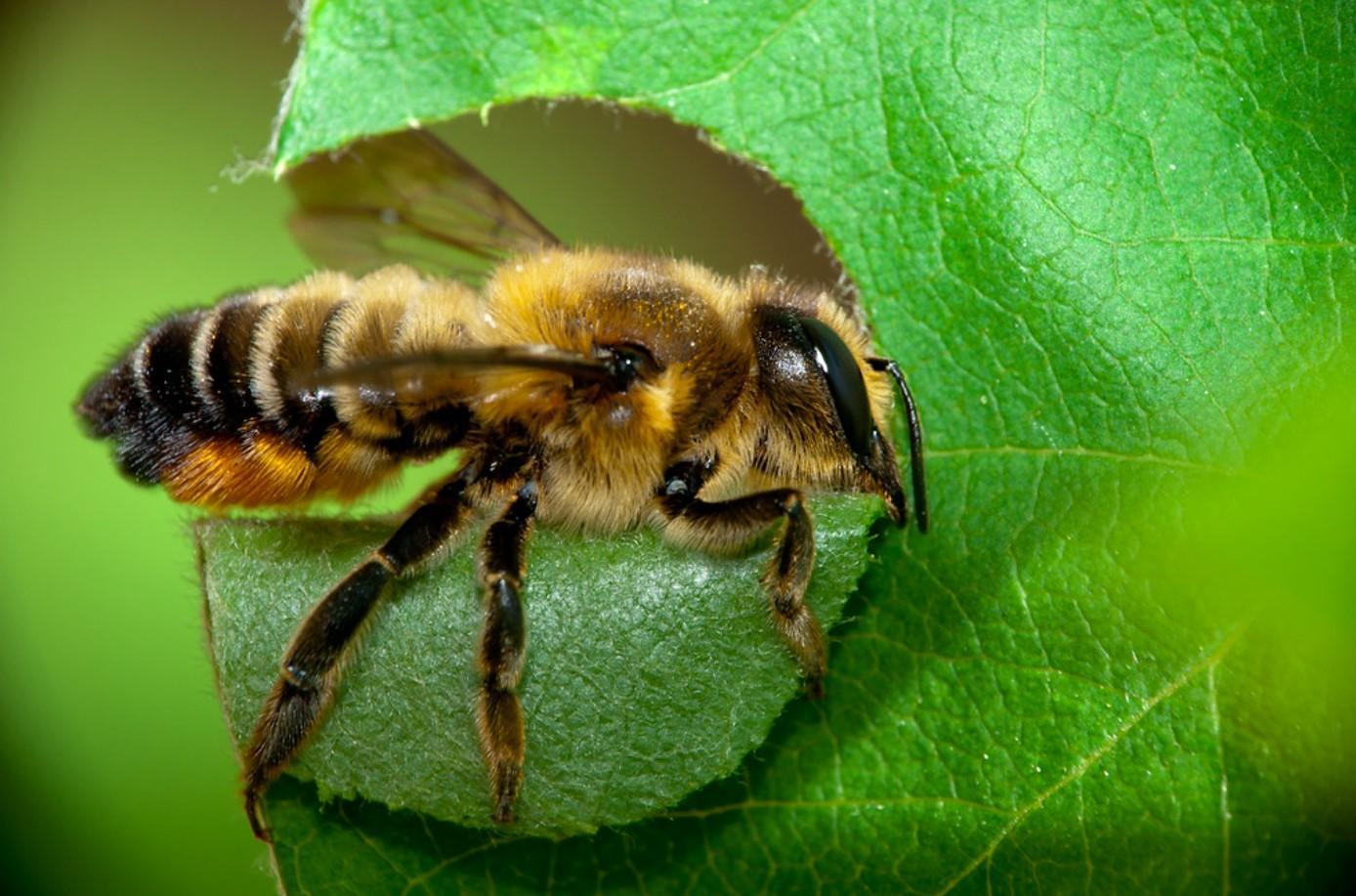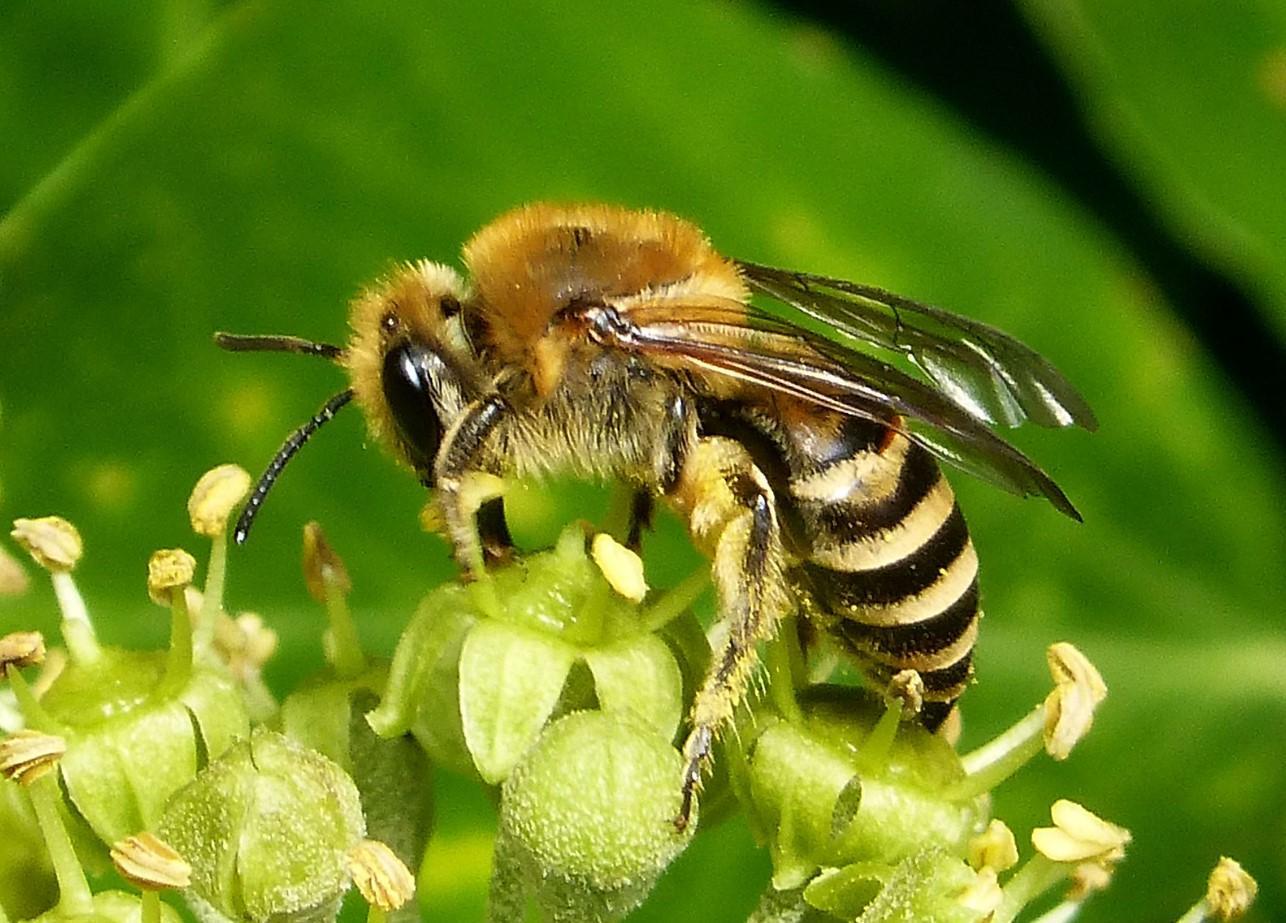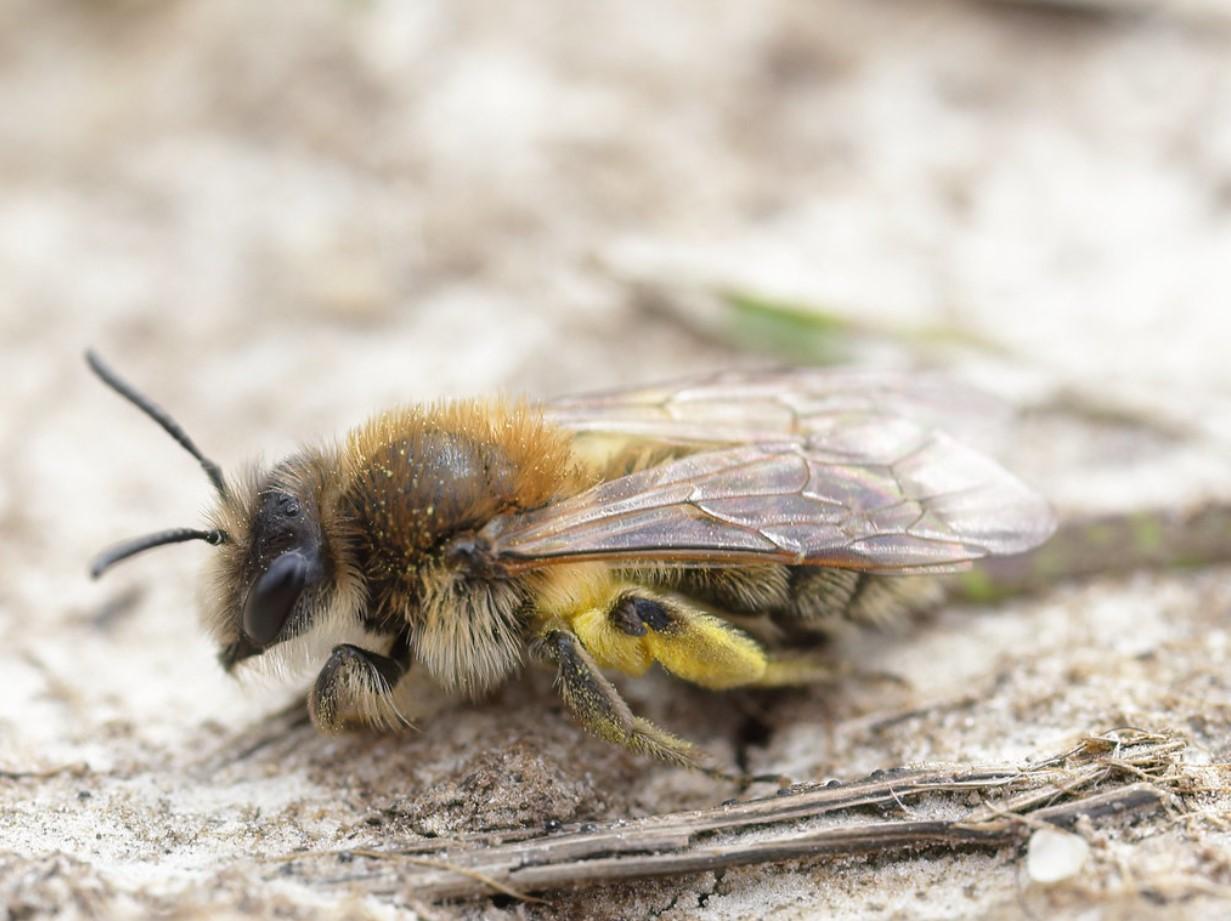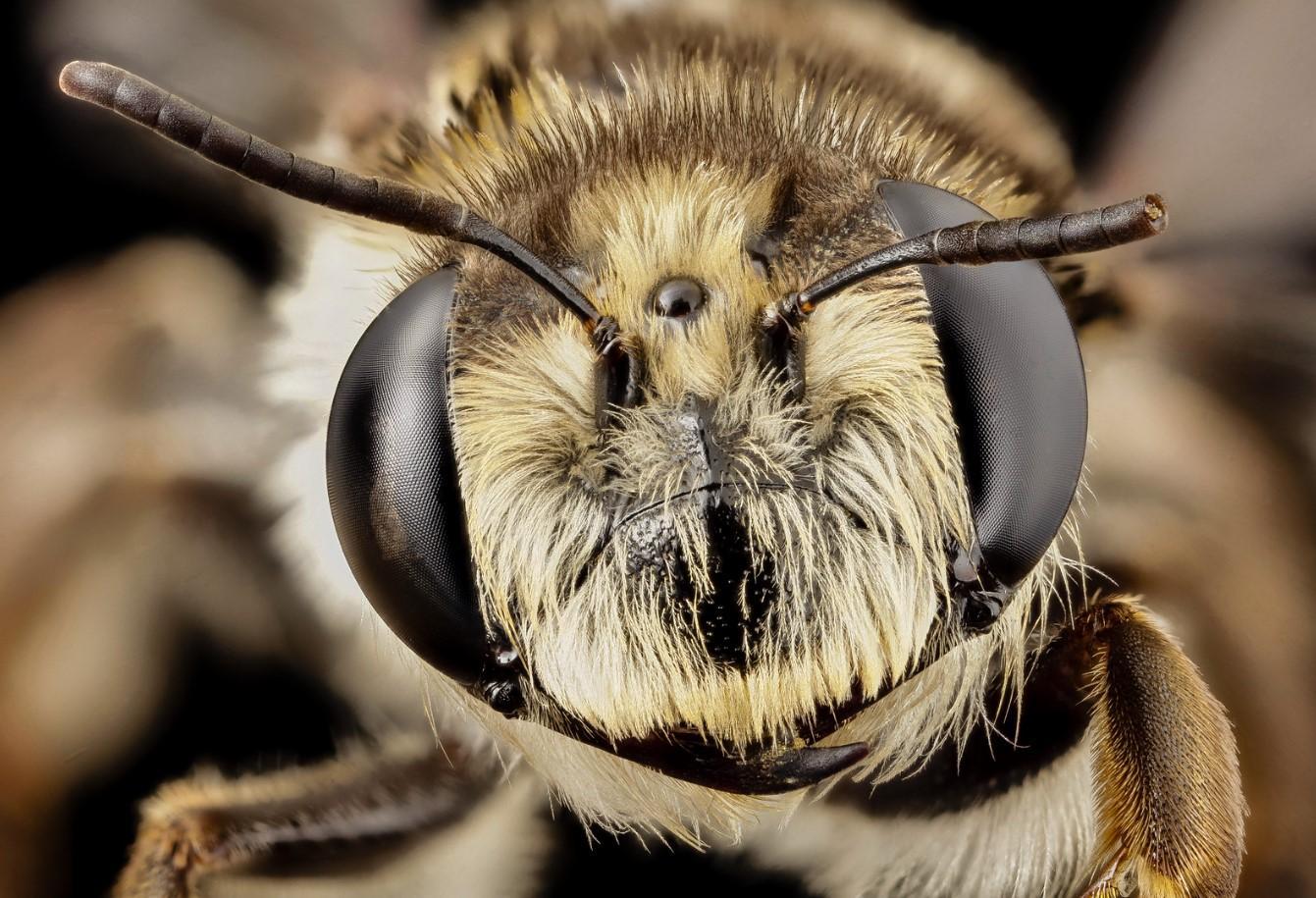Different Types of Bees - Bee Identification Guide


Those unfamiliar with the subject may not be aware of the remarkable diversity of bee species worldwide. It's estimated that there are over 20,000 different bee species worldwide, each with its own distinct traits and attributes. These bees are categorized into seven recognized families, each contributing to the intricate tapestry of the bee world.
The following article by thedailyECO explores the seven primary bee types, their distinctive characteristics, and practical tips for identifying and distinguishing them.
Apidae bees
The Apidae family, a diverse and fascinating group of bee species, including the iconic honeybees, bumblebees, orchid bees, melipona bees, and burrowing bees. These insects exhibit a range of unique characteristics and behaviors that set them apart from other bee families.
A defining feature of most Apidae species is their complex social structure, characterized by a well-defined caste system. At the heart of the colony is the queen bee, the sole fertile female responsible for laying eggs and ensuring the continuation of the hive. She is supported by a dedicated workforce of female worker bees, who tirelessly gather pollen and nectar to nourish the developing larvae. Male drones, on the other hand, primarily serve the purpose of mating with the queen.
How to identify Apidae bees?
Apidae bees can be distinguished from other bee families by several key features. Their bodies are typically robust and hairy, with varying coloration depending on the species. They possess well-developed pollen-collecting structures, such as pollen baskets or scopae, on their hind legs.
If you enjoyed this exploration of bee diversity, you might also like our article on the intriguing world of queen bees, where we delve into their unique size, appearance, and roles within the hive.

Megachilidae bees
The Megachilidae family stands out for its fascinating array of solitary bees, including mason bees, leafcutter bees, carder bees, and resin bees. These industrious insects exhibit remarkable nesting behaviors and play a crucial role in pollination.
Unlike their social counterparts, Megachilidae bees are predominantly solitary, meaning each female bee constructs her own nest and cares for her offspring independently. This solitary lifestyle has led to the evolution of unique nesting strategies and adaptations.
Megachilidae bees showcase a remarkable diversity of nesting habits, reflecting their resourcefulness and adaptability. For example:
- Mason bees, true to their name, construct nests using mud or other materials, often in pre-existing cavities or holes.
- Leafcutter bees, on the other hand, meticulously cut circular pieces from leaves to create individual nest cells for their young.
- Carder bees, known for their industrious nature, collect plant or animal hairs and fibers to create their nests, while resin bees incorporate plant resins into their nest construction, providing added protection and insulation.
Despite their solitary lifestyle, these bees are highly effective pollinators, contributing significantly to the health of ecosystems and food production.
How to identify Megachilidae bees?
Megachilidae bees can be distinguished from other bee families by their characteristically robust bodies and dense hair covering. They often exhibit striking coloration, with some species displaying metallic hues. Notably, they lack pollen baskets on their hind legs, instead carrying pollen on their abdomens, a unique trait among bees.

Melittidae bees
The Melittidae family, a lesser-known yet intriguing group within the bee world, comprises a diverse array of solitary bees, including the oil-collecting bees, the melittid bees, and the dasypodaid bees.
Similar to Megachilidae bees, Melittidae bees are predominantly solitary, with each female bee responsible for constructing her own nest and caring for her offspring independently. Their nesting habits vary among species, with some utilizing pre-existing cavities or burrowing into the ground.
A defining characteristic of Melittidae bees is their oligolectic foraging behavior, meaning they specialize in collecting pollen from a narrow range of plant species. This specialization reflects their unique adaptations and the intimate relationships they have evolved with specific plants.
Within the Melittidae family, oil-collecting bees stand out for their remarkable ability to gather floral oils alongside pollen. These oils are used for various purposes, including lining their nest cells and providing nourishment for their larvae.
How to identify Melittidae bees?
Melittidae bees can be distinguished from other bee families by their generally small to moderate size, often with a slender body shape. They typically possess short tongues, reflecting their specialized foraging habits. Their coloration varies among species, ranging from metallic hues to black or brown.

Colletidae bees
The Colletidae family is commonly known as plasterer bees. Like many of their solitary counterparts, lead independent lives, with each female responsible for constructing her own nest and raising her offspring.
They are known as "plasterer bees" because they line the walls of their underground nests with a waterproof secretion that they collect and carry to their nest site. This secretion acts as a protective barrier against moisture, ensuring the survival of their offspring.
Colletidae bees, despite their solitary nature, are highly effective pollinators, contributing significantly to the health of ecosystems and food production. Their hairy bodies and specialized pollen-collecting structures enable them to efficiently transfer pollen between flowers, ensuring successful pollination.
In fact, Colletidae bees can be found in a variety of habitats, ranging from arid and semiarid regions to tropical rainforests. This diversity in distribution highlights their adaptability to different environmental conditions.
How to identify Colletidae bees?
Colletidae bees can be distinguished from other bee families by their characteristically slender bodies and elongated tongues, reflecting their specialized foraging habits. Their coloration varies among species, ranging from metallic hues to black or brown.
If you're intrigued by the diverse world of bees, you might also like our article on the fascinating ways bees communicate with each other, revealing their intricate dance moves and scent signals.

Andrenidae bees
The Andrenidae family of bees, commonly known as mining bees, is unique in several ways.
Unlike many other bee families, most Andrenidae species are solitary. Each female bee constructs and provisions her own nest, usually in the ground, rather than living in colonies like honey bees or bumblebees. In fact, mining bees are known for their distinctive habit of nesting in the ground. They excavate tunnels and chambers in sandy or loose soil, where they lay their eggs and store pollen for their larvae.
Andrenidae bees display a wide range of flower and plant preferences. Some species specialize in collecting pollen from specific plant species, making them valuable pollinators for those plants.
How to identify Andrenidae bees?
There is a diversity of sizes and appearances among Andrenidae species, with sizes varying from a few millimeters to over an inch. Their coloration varies among species, ranging from metallic hues to black or brown.

Halictidae bees
The Halictidae family encompasses an array of fascinating bees, commonly known as sweat bees. Halictidae is one of the largest bee families, comprising over 4,000 species worldwide. They are found on every continent except Antarctica, making them one of the most widespread bee families.
Sweat bees are known for their diverse nesting behaviors. While the majority are solitary, some species are social, forming small colonies. Solitary sweat bees nest in the ground, often in sandy or loose soil, while social species build communal nests with multiple females sharing a central entrance.
Sweat bees are attracted to the sweat of humans and other animals. They may land on your skin to obtain minerals and nutrients from your perspiration. Although their presence can be a bit startling, sweat bees are generally non-aggressive and rarely sting.
Halictidae bees are considered generalist pollinators, meaning they visit a wide variety of flowering plants for nectar and pollen. Their diverse foraging habits make them important contributors to pollination in many ecosystems.
How to identify Halictidae bees?
Halictidae bees can be distinguished from other bee families by their characteristically slender bodies and often metallic coloration. They typically possess well-developed pollen-collecting structures on their hind legs and exhibit a range of sizes, from small to moderately large.

Stenotritidae bees
The Stenotritidae family, a fascinating group endemic to Australia, comprises a unique array of bees known as colletid bees or reed bees. These remarkable insects exhibit distinctive nesting behaviors and play a crucial role in the pollination of native flora.
Stenotritidae is one of the most primitive bee families, dating back to the late Cretaceous period, around 100 million years ago. They are often referred to as "living fossils" because they retain many characteristics of ancient bee lineages.
The nest structures of Stenotritidae bees are simple compared to many other bee families. They may create underground burrows or construct nests within decaying wood.
Despite their solitary nature, Stenotritidae bees are highly effective pollinators, contributing significantly to the health of Australian ecosystems and the pollination of native plants.
How to identify Stenotritidae bees?
These bees have retained certain physical traits that are considered more primitive, such as large, relatively hairless eyes and mandibles adapted for chewing rather than carrying pollen. They typically possess well-developed pollen-collecting structures on their hind legs and exhibit a range of sizes, from small to moderately large.
In our other article, we take a closer look at the topic of bee stings, exploring the circumstances under which bees lose their stingers and the implications for their survival.

If you want to read similar articles to Different Types of Bees - Bee Identification Guide, we recommend you visit our Wild animals category.
- Beatty, R., Beer, A., & Deeming, C. (2010). The book of nature. Great Britain: Dorling Kindersley.
- University of Minnesota (n.d.) Native bees . Available at: https://beelab.umn.edu/Native-Bees.












